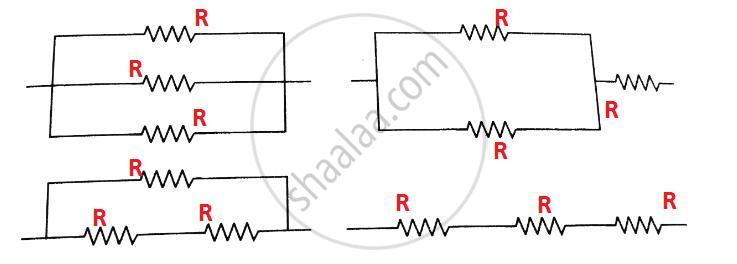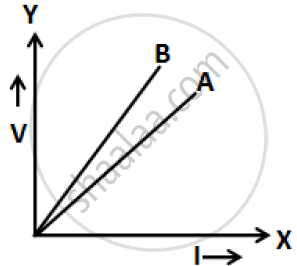Advertisements
Advertisements
Question
Choose the correct alternative and rewrite the following:
You are given three equal resistances. In how many combinations can they are arranged?
Options
Three
Four
Five
Two
Solution
Four
Three equal resistances can be connected in four different combinations:
- All three are in parallel.
- Two in parallel and third in series.
- Two in series and third in parallel of both.
- All three are in series.

APPEARS IN
RELATED QUESTIONS
Why is the series arrangement not used for domestic circuits?
The V-I graph for a series combination and for a parallel combination of two resistors is shown in the figure below. Which of the two A or B. represents the parallel combination? Give reasons for your answer.

The substance having infinitely high electrical resistance is called:
(a) conductor
(b) resistor
(c) superconductor
(d) insulator
Name the material which is the best conductor of electricity.
Give one example to show how the resistance depends on the nature of material of the conductor.
What possible values of resultant resistance one can get by combining two resistances, one of value 2 ohm and the other 6 ohm?
Name a substance of which the resistance remains almost unchanged by the increase in temperature.
What potential difference is needed to drive a current o f 1 A through a 5 Ω resistor?
Bends in a rubber pipe reduce the flow of water through it. How would the bands in a wire affect its electric resistance?
Write an expression for the resistance of a conducting wire in terms of its length and area of cross-section.
State expression for Resistance connected in series.
Six resistances are connected together as shown in the figure. Calculate the equivalent resistance between points A and B.

Four resistances of 2.0Ω each are joined end to end, to form a square ABCD. Calculate the equivalent resistance of the combination between any two adjacent comers.
Two resistors having 2Ω and 3Ω resistance are connected—(i) in series, and (ii) in parallel. Find the equivalent resistance in each case.
With the help of a circuit diagram derive the formula for the resultant resistance of three resistances connected:
- in series and
- in parallel
Two wires of the same length and area made of two materials of resistivity ρ1 and ρ2 are connected in series to a source of potential V. The equivalent resistivity for the same area is:
Show how you would connect three resistors, each of resistance 6 Ω, so that the combination has a resistance of 4 Ω.
